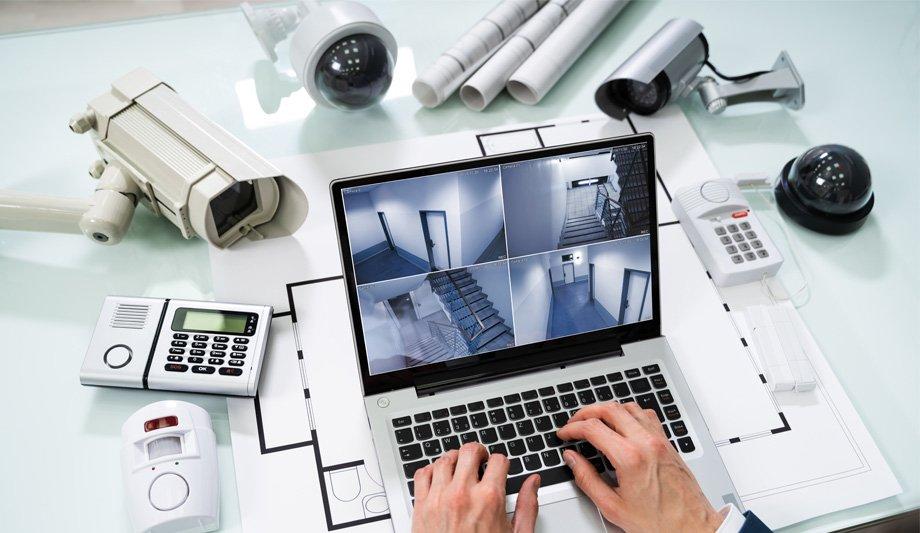Which security systems are more proactive than reactive?
Editor Introduction
The advantages of security systems as forensic and investigative tools are well understood and demonstrated in the market. However, the new trend is toward systems that are useful in real-time and that even predict a security event, before it happens.
We asked this week’s Expert Panel Roundtable: Which security systems are becoming more proactive than reactive?
While the nature of our industry dictates that some work will always be reactive, the fact is that more and more should be proactive. We have the tools and the experience to put plans in place for our clients and reach a level of preparedness that wasn’t possible in previous years. A prime example of this is real-time situational software. Tools like this can create a culture of security and enhanced preparedness, by running exercises in the software, based on any number of scenarios. Teams can train and prepare for various scenarios, so that if and when they do happen, the response is planned out rather than reactive. Software can be accessed by all stakeholders to open lines of communication and manage a security response. This can underpin many other security systems, thereby helping organisations to become more proactive, with every element of their security service.
The role of physical security systems has evolved significantly over the last few years. From being mostly used as forensic tools, modern physical security systems are now being developed for intelligence-led risk mitigation and proactive prevention. With a unified security system that tightly integrates and correlates data from sensors, such as access control, intrusion, video, ALPR and more, organisations can establish a more proactive security operation environment, instead of reacting to a security event, after the fact. New crime analysis and case investigation tools, based on cognitive engineering and the latest in video analytics, can now facilitate intelligence-led policing through data discovery and construction of relationships between people, places, time, objects, and activities. The latest advancements in ALPR technology go beyond recognising licence plate numbers, by also identifying vehicle characteristics, like colour and type, and behaviour analytics, such as speed estimation and direction of travel, under all weather conditions.
While proactive security seems like an obvious goal, it’s important to remember that by their very nature, most security systems (including sensors, cameras, and access credential readers) are inherently reactive to a condition or action in the monitored environment, as it takes place. While these systems are excellent at alerting the security team, they aren’t really proactive. A truly proactive system would require an inherent AI/Machine Learning capability that allows the generation of predictive algorithms, based on actual event data. If the system can accurately monitor and interpret real-world data in its space, then it can become more proactive. However, there is always a danger that a system pre-occupied by this could end up concentrating on expected scenarios, making the unexpected even more of a surprise. Ideally all security systems need to do both – being both proactive to suggest potential issues and fully alert to any breach, however unexpected.
The addition of artificial intelligence (AI) software makes video surveillance a much more proactive technology. Cameras no longer simply transmit live video for security operations centre staff to review and act upon alarm events. Now, AI software rapidly makes judgments on events to eliminate up to 95% of false alarms. Previously, non-threatening activities, such as a stray animal running across the field of vision required an operators’ attention, possibly causing a delay in response or entirely missing an actual event. The same software also automatically identifies loiterers or crowd formations. Watchlists allow security teams to load photos of people or vehicles to observe – or ignore. A camera’s angle being moved or significant scene changes result in an alert to the SOC. The analytic AI software also helps with forensic investigations, tracking objects of similar appearance from all cameras or selected sites. Proactive video surveillance has arrived.
The abundance of data that security systems provide can be overwhelming, to say the least. How that data is handled and how to make that data work for you is the difference between being proactive and reactive. Security systems produce data that can be used proactively in securing facilities and providing a safer environment. Analytics or business intelligence can help identify people who may pose a high risk to an organisation. Anomalies in employees’ or contractors’ patterns, such as unusual arrival or departure times, or trying to access the wrong doors, could easily happen under the radar and be completely overlooked. Analytics systems can notify operators that a closer look at a particular person may be warranted. The access control data, along with other data, can be consumed, assessed, and communicated to other departments, in order to prevent risk proactively.
Security systems have historically been used to detect suspicious behaviour and send alerts, when unauthorised activity occur on-premises. The challenge, however, is that this process is very reactive and alerts are typically triggered, after someone has obtained access to the site. Advanced edge-based analytics can alert in real time, when suspicious activity is detected on or around the protected estate. This provides an opportunity for proactive response and the potential to prevent a malicious event. The ability to ‘see in the dark’ makes region surveillance much more robust and resilient, thereby enhancing the level of protection that a CCTV system can provide. Today, most advances in security systems are focused on proactive alerts and response, which lead to preventive notifications. Utilising edge analytics, motion detection, thermal sensors, and comprehensive rules engines, video management systems can also provide alerts and visibility that can help prevent break-ins, and they provide real-time data and visibility
We often have more data at our fingertips than we know what to do with, but the solutions that have harnessed this information have really changed the user experience. In the security space, we have specifically seen cloud-based card personalisation solutions utilise the card printer data, in order to enable the card office administrators to change from a reactive fire-fighting approach to less stressful proactive approach. Just like you never run out of gas, as soon as you reach your destination, you do not run out of printer consumables, when the last card is printed. This innovative approach is accomplished by providing information, such as the printer status, its consumable levels, and whether a software update is needed in real time, through a dashboard or text notifications. In addition, these cloud-based card personalisation solutions provide the flexibility to see this information from anywhere, using the Cloud to provide user flexibility.
Historically, access control was simply about opening doors with PIN codes and later with smart cards. But, intelligent access control systems have been constantly evolving and they now offer an increasing array of proactive features. The sophisticated integration abilities of quality access control systems mean managers can control all aspects of access and security from one unified platform, from CCTV and elevators to visitor management and HR systems. Whether you simply want reminders, when health or safety training needs renewing, proactive measures to manage the flow of people, or insights to drive efficiencies, intelligent access control can deliver. Likewise, if you want a system that automatically pulls up relevant CCTV if an alert is triggered, or elevators that read credentials presented to entry turnstiles and automatically direct users to their fastest elevator, in order to avoid crowding, quality access control can achieve this. It means you can be more proactive too.
It is not that security systems are becoming more proactive, it’s the evolution of technology that is allowing security to become proactive. Advancements in mobile applications, near field communications (NFC), artificial intelligence, predictive analytics, facial recognition, cloud computing etc. are enabling business to become more proactive, security is the use case. To identify the security systems, one must look for the ones that integrate these technologies. What is consistent with these technologies, is that they all center on data, which says that the more data you have the more accurate and proactive security can be and therefore, reduce more risk. For example, Command Centre from Zendelity leverages the latest advancements in mobile devices, NFC and cloud computing to enable safety and security for the first time, to be able to capture operating data in real time, so they can identify potential hazards, before they impact customers, employees, vendors and guests.
Editor Summary
Risk mitigation and proactive prevention are among the ways that security systems are becoming more proactive in the current climate. Security systems provide a lot of data that can be analysed to yield greater insights into possible future risks and scenarios. Artificial intelligence (AI) and machine learning help current systems analyse the past and predict future risks. Being able to predict and/or prevent a future event is a new opportunity for the security market.
- Related links
- AMAG CCTV software
- AMAG Access control software
- Genetec Access control software
- Genetec CCTV software
- HID Access control software
- Inner Range Access control systems & kits
- Inner Range Access control software
- TDSi Access control software
- TDSi Access control systems & kits
- TDSi CCTV software
- Genetec IP cameras
- TDSi IP cameras
- TDSi IP Dome cameras
- Biometric Access control systems & kits
- Biometric Access control software
- ANPR Software CCTV software
- Indoor/Outdoor IP Dome cameras
- Network IP cameras
- Proximity Access control systems & kits
- Standalone / Networked Access control systems & kits
- Proximity Access control software
- IP Surveillance Software CCTV software
- Central Monitoring Option Access control software
- Monitoring Software CCTV software
- Face Recognition Software Access control software
- Related categories
- CCTV software
- Access control systems & kits
- Access control software
- IP cameras
- IP Dome cameras

















